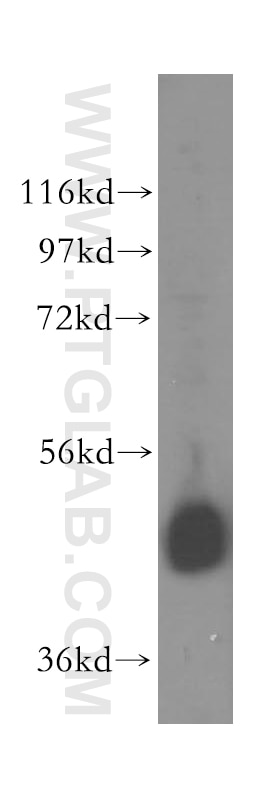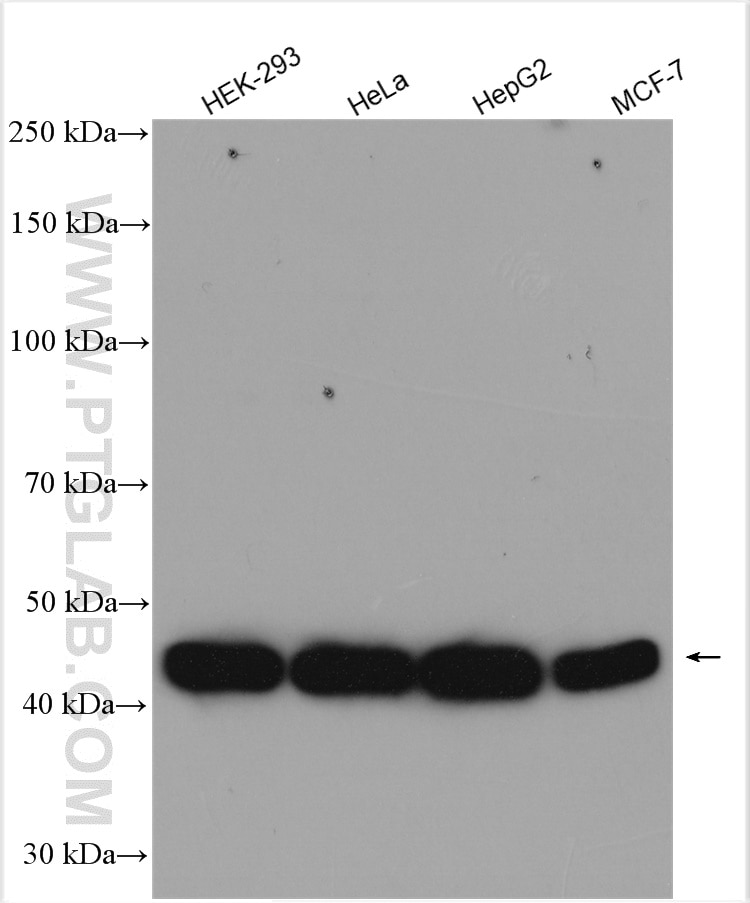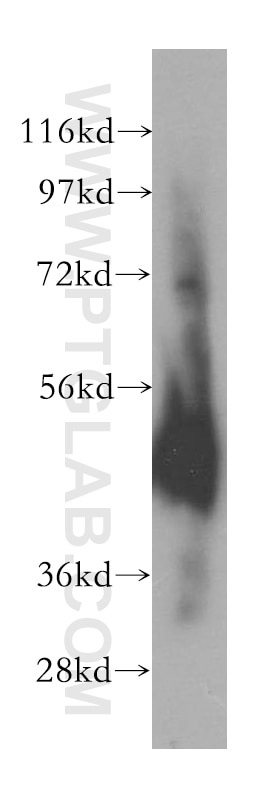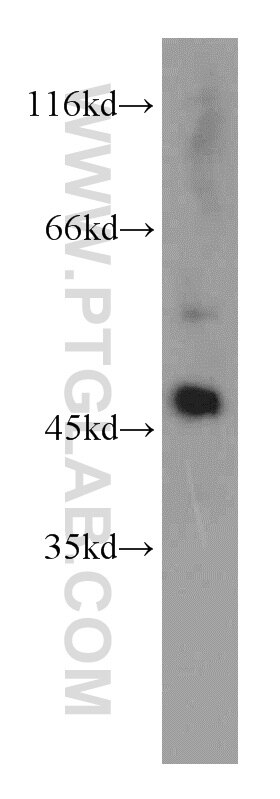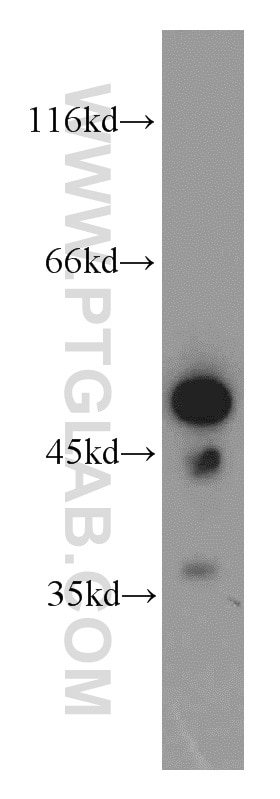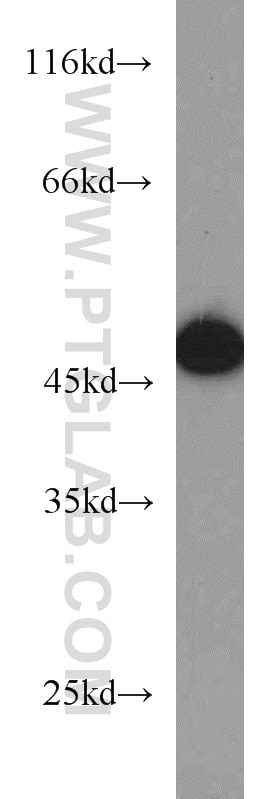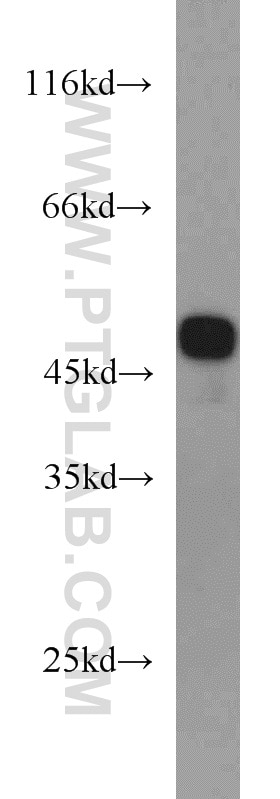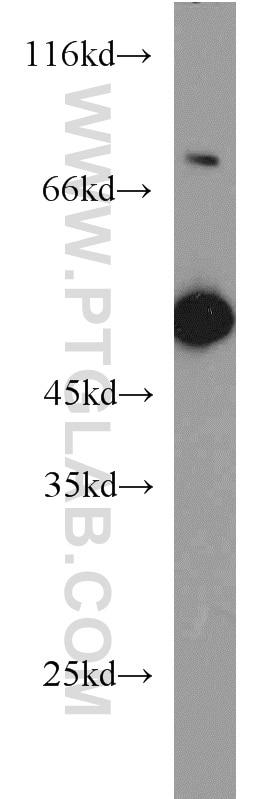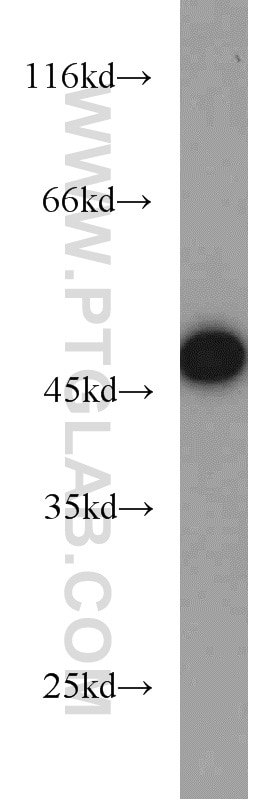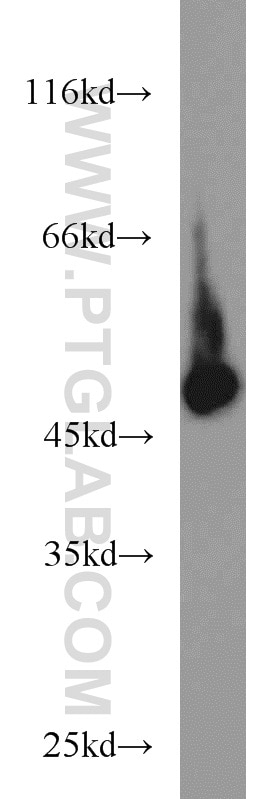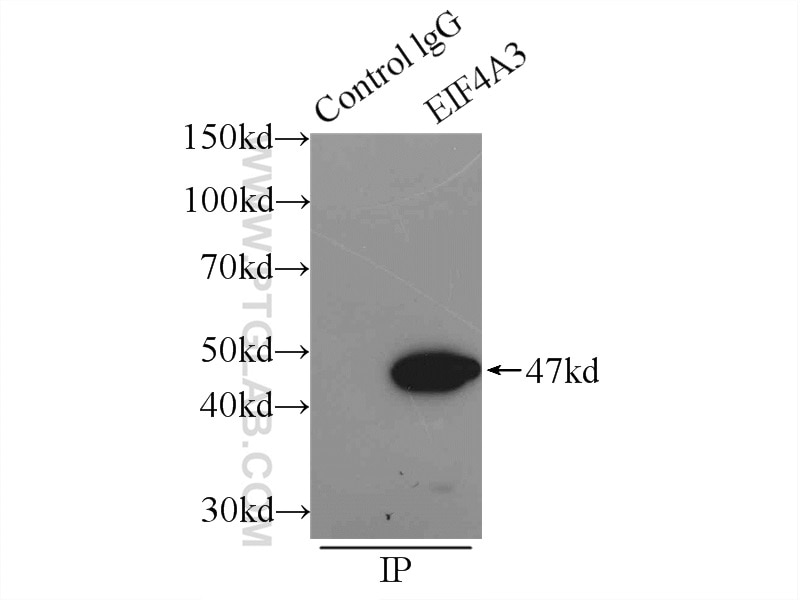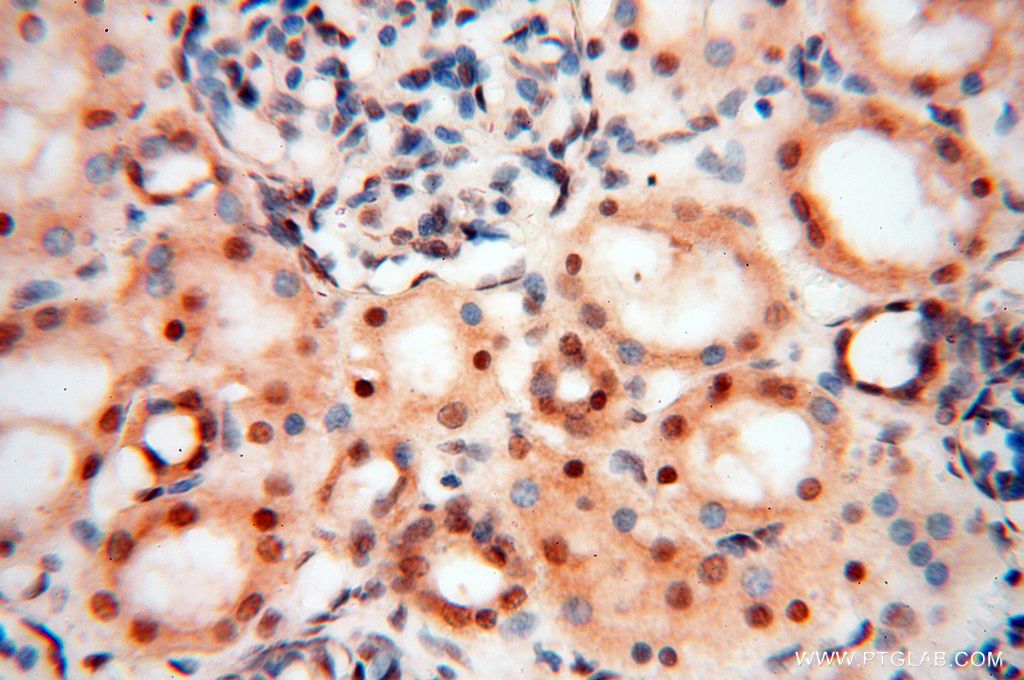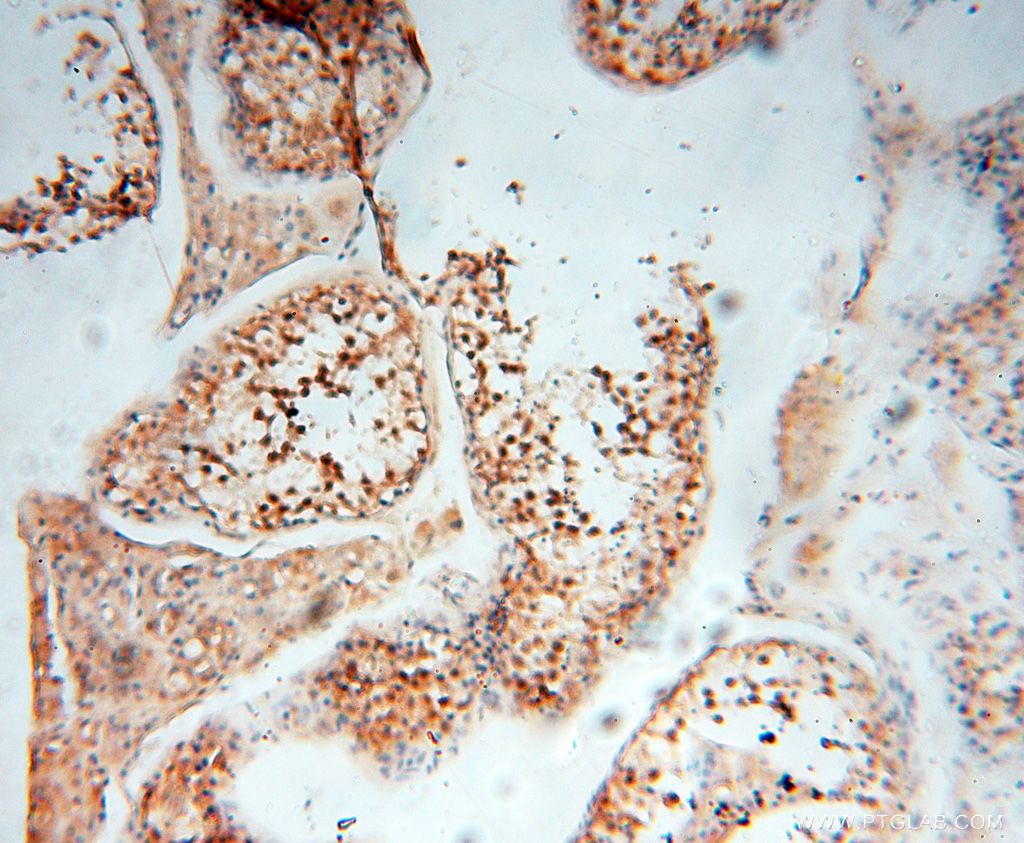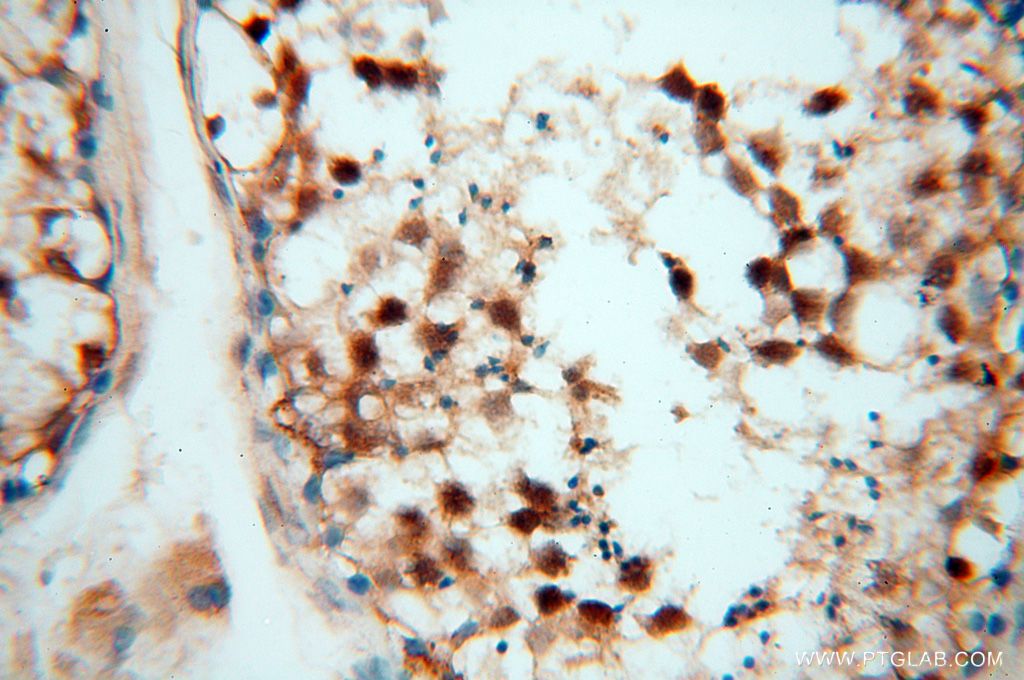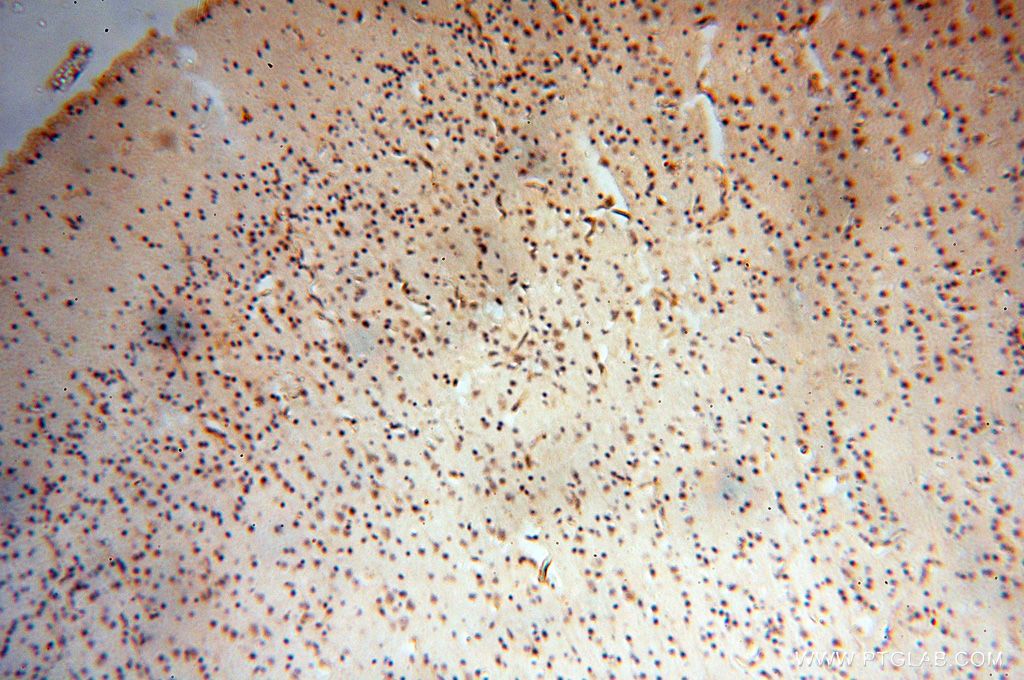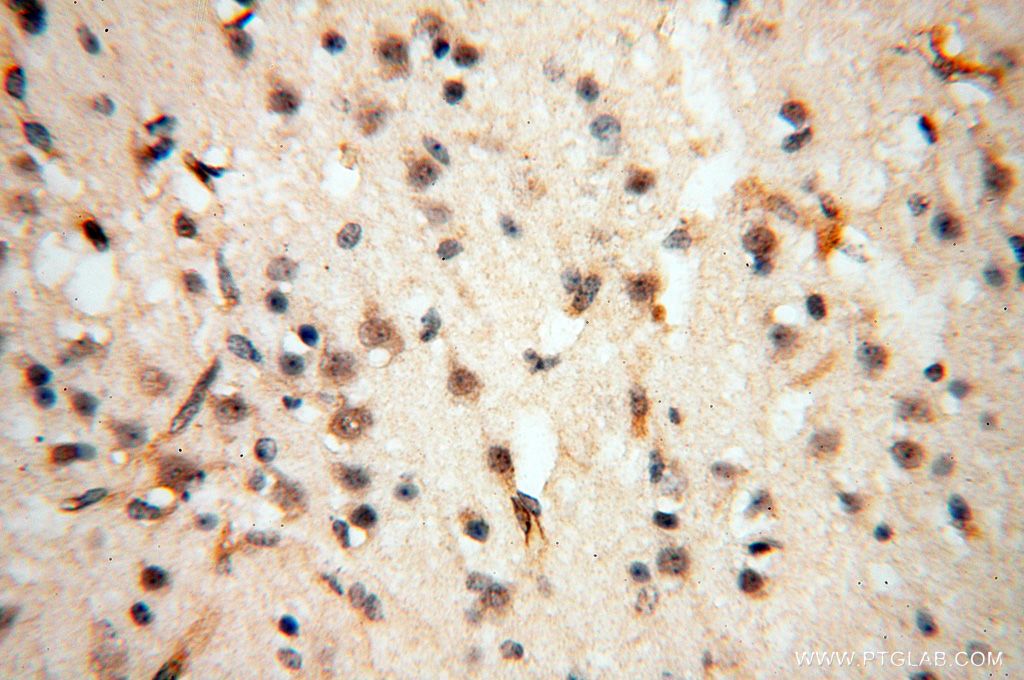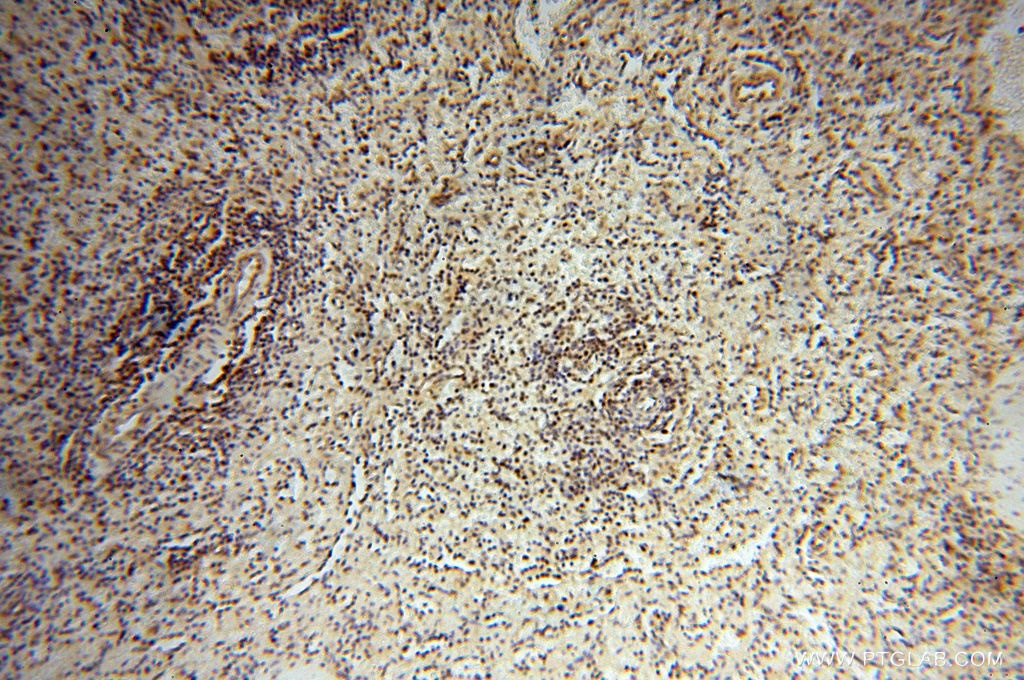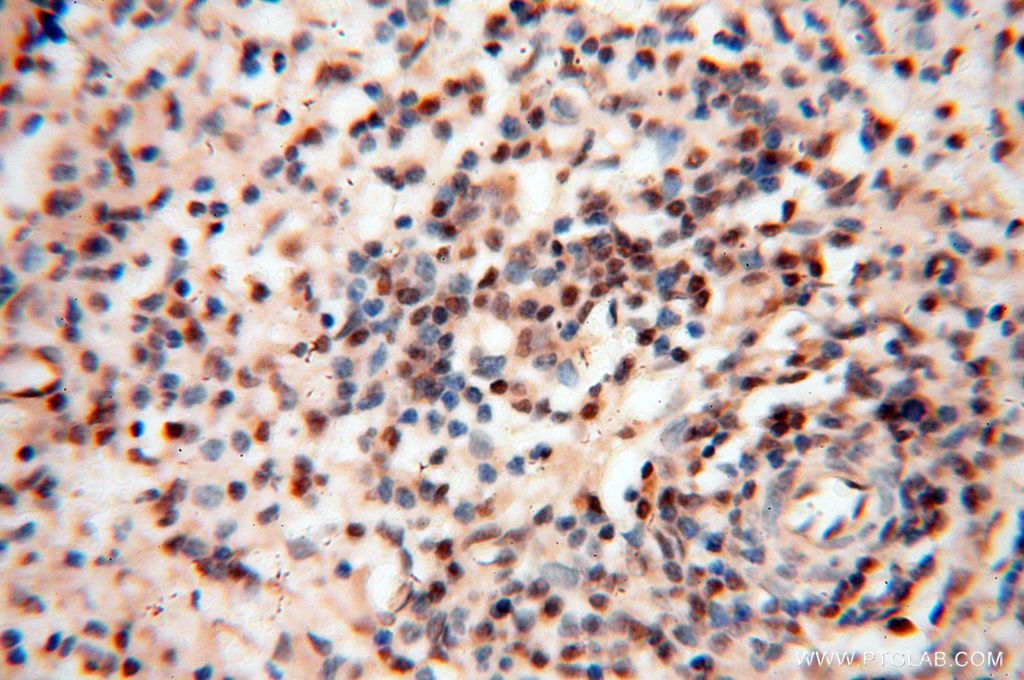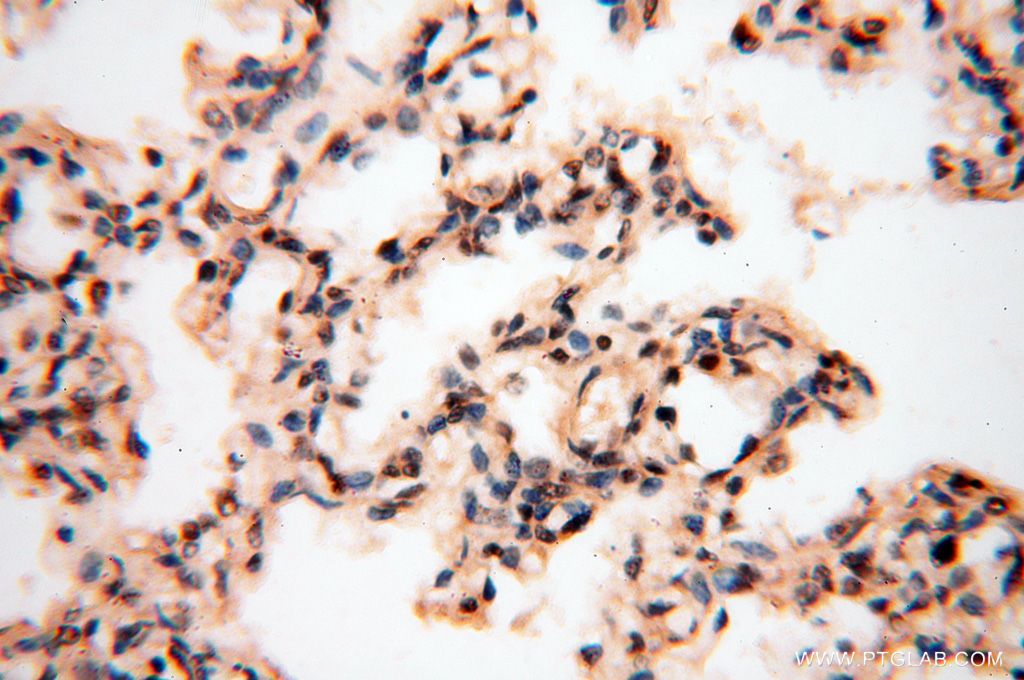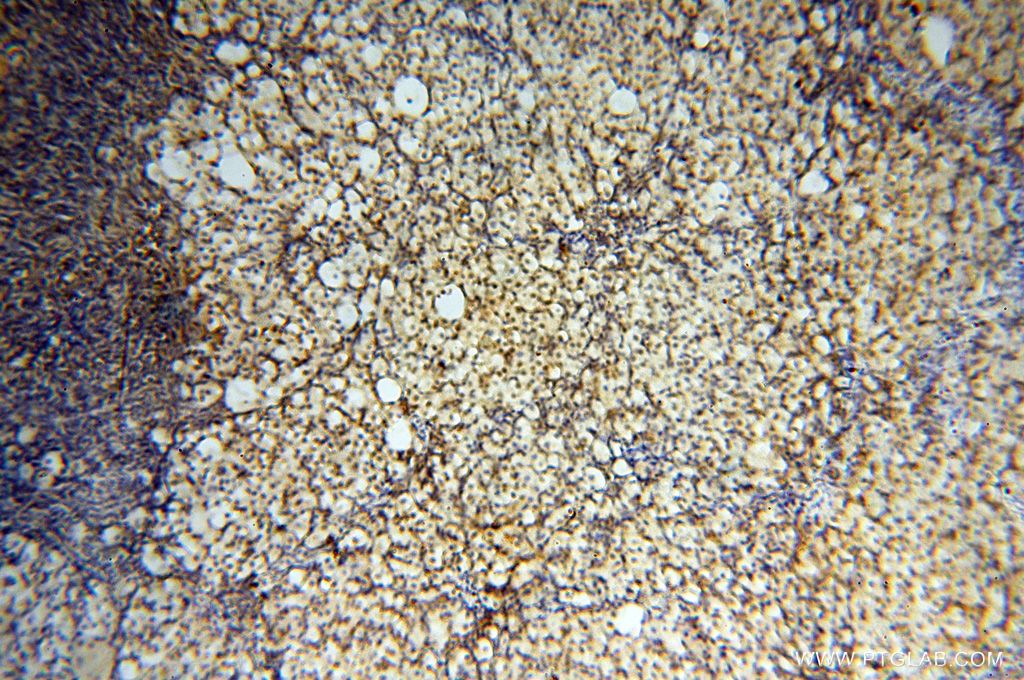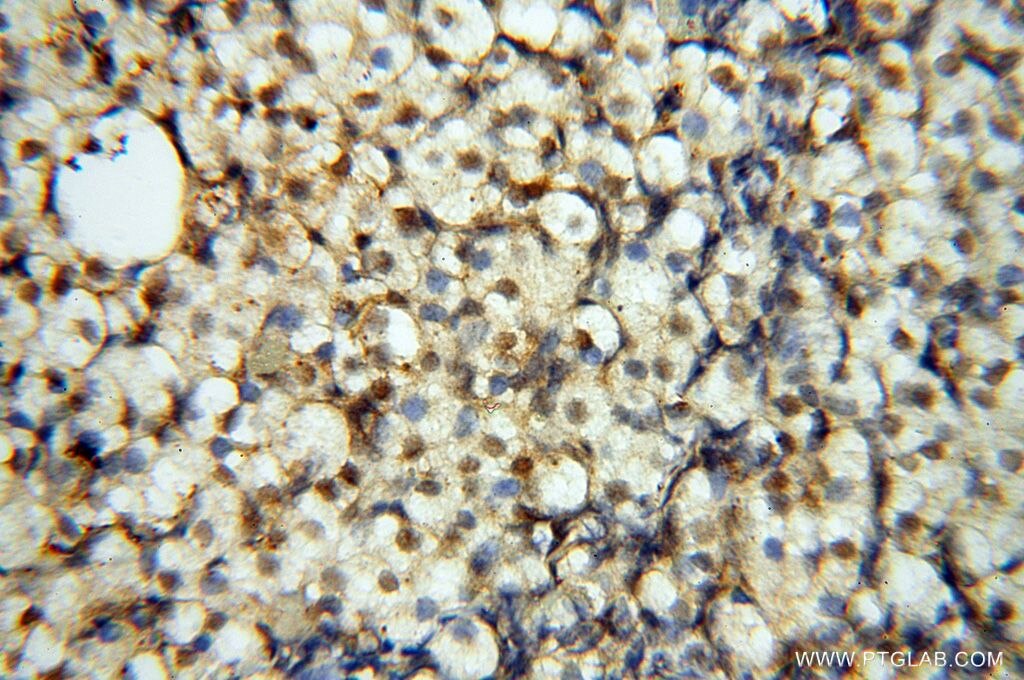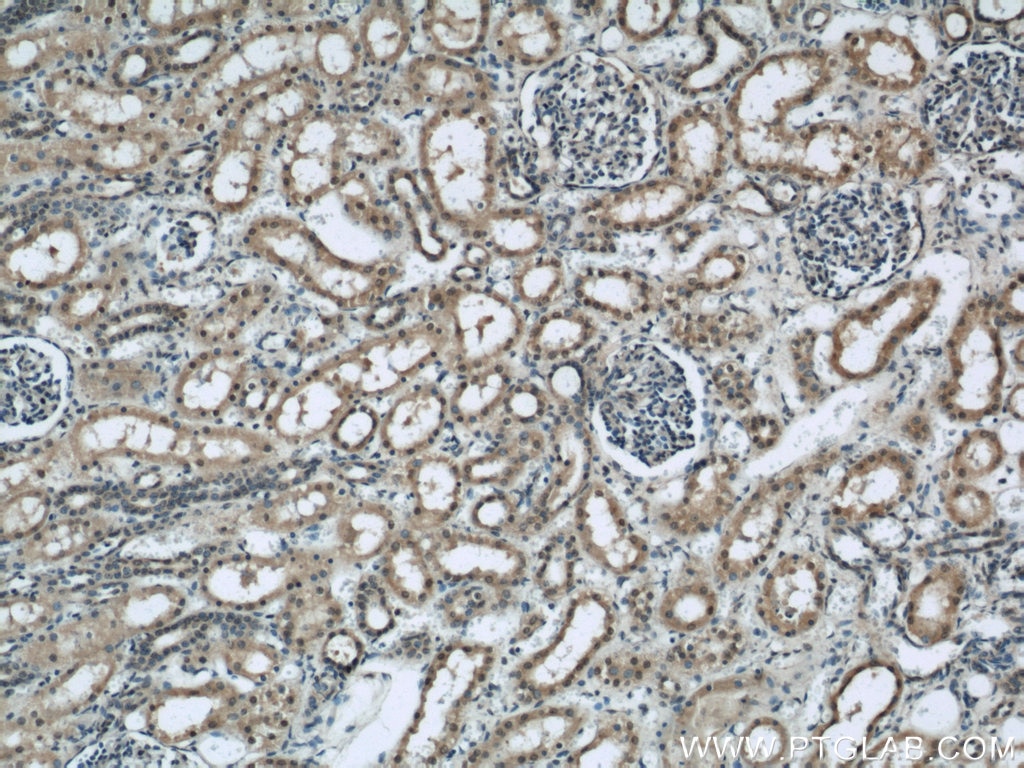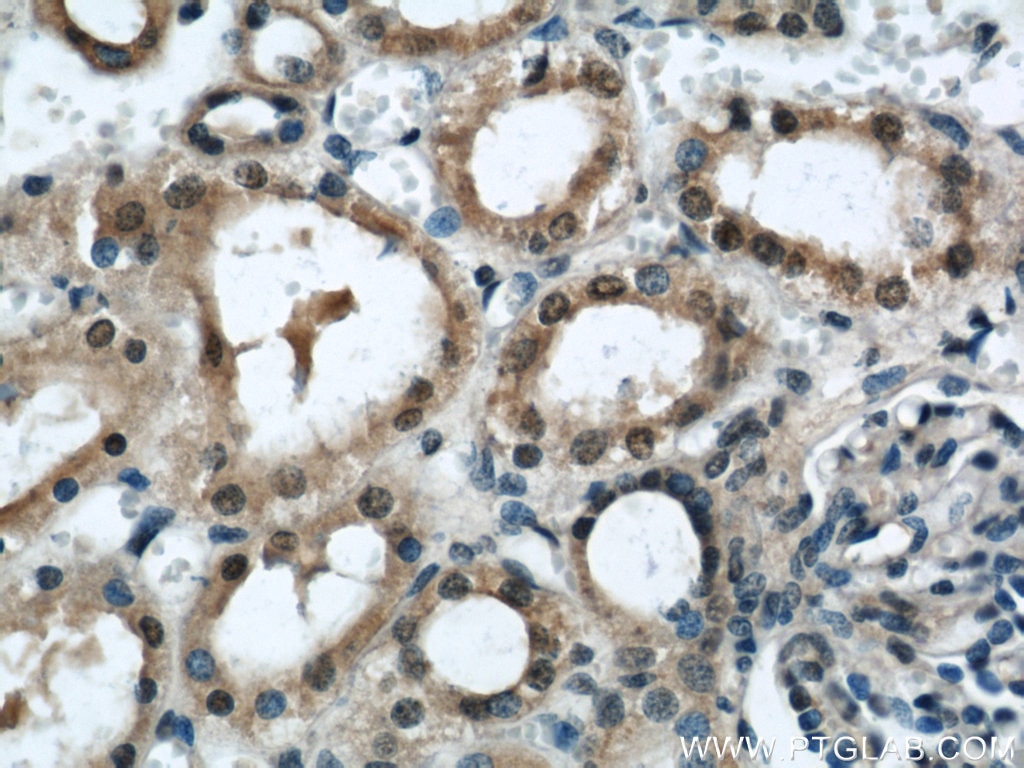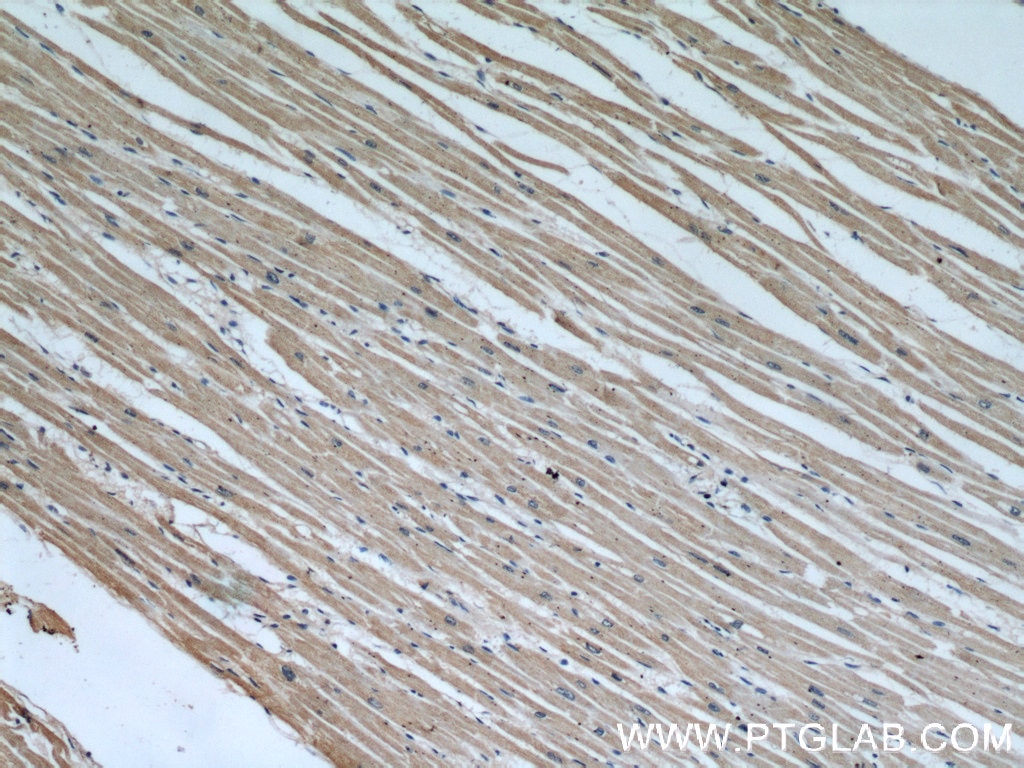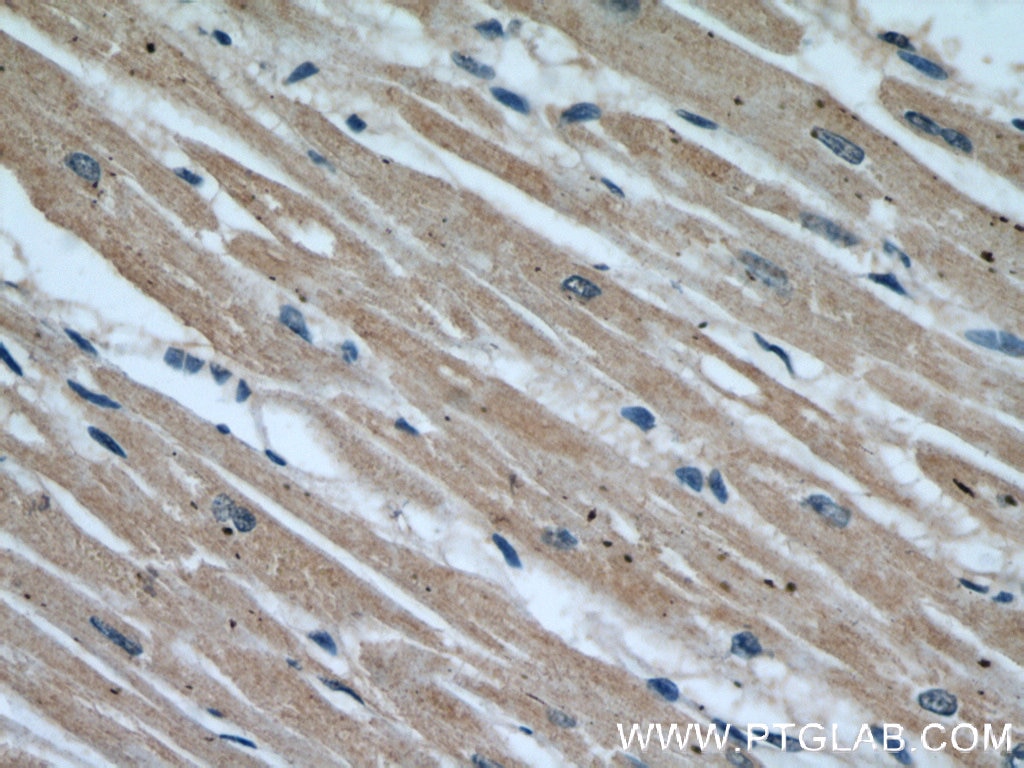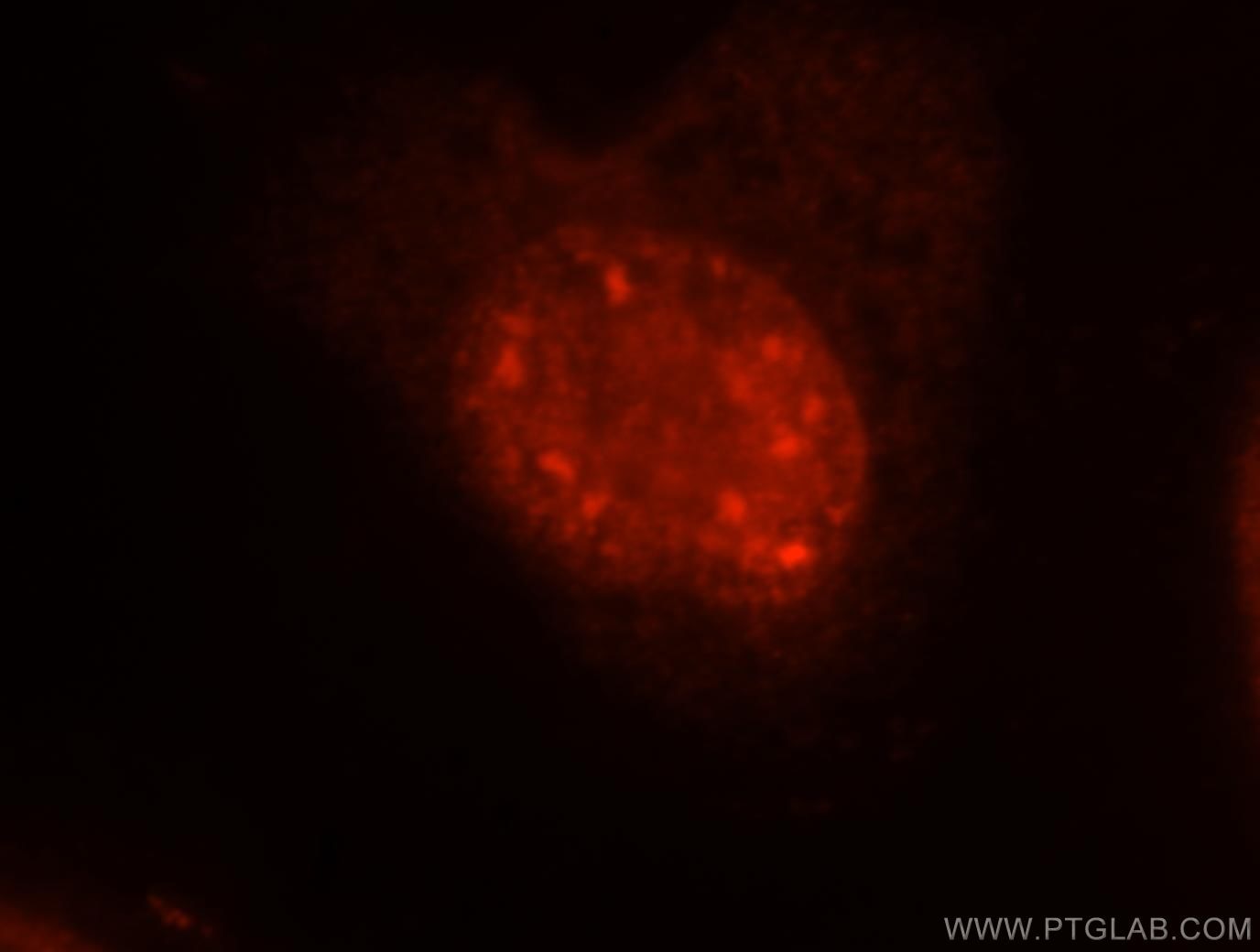Tested Applications
| Positive WB detected in | A549 cells, mouse thymus tissue, mouse heart tissue, mouse lung tissue, HEK-293 cells, mouse liver tissue, HeLa cells, MCF-7 cells, HepG2 cells |
| Positive IP detected in | mouse heart tissue |
| Positive IHC detected in | human kidney tissue, human brain tissue, human heart tissue, human lung tissue, human ovary tissue, human spleen tissue, human testis tissue Note: suggested antigen retrieval with TE buffer pH 9.0; (*) Alternatively, antigen retrieval may be performed with citrate buffer pH 6.0 |
| Positive IF/ICC detected in | MCF-7 cells |
Recommended dilution
| Application | Dilution |
|---|---|
| Western Blot (WB) | WB : 1:1000-1:4000 |
| Immunoprecipitation (IP) | IP : 0.5-4.0 ug for 1.0-3.0 mg of total protein lysate |
| Immunohistochemistry (IHC) | IHC : 1:20-1:200 |
| Immunofluorescence (IF)/ICC | IF/ICC : 1:10-1:100 |
| It is recommended that this reagent should be titrated in each testing system to obtain optimal results. | |
| Sample-dependent, Check data in validation data gallery. | |
Published Applications
| KD/KO | See 6 publications below |
| WB | See 41 publications below |
| IHC | See 5 publications below |
| IF | See 12 publications below |
| IP | See 3 publications below |
| CoIP | See 4 publications below |
| RIP | See 16 publications below |
Product Information
17504-1-AP targets EIF4A3 in WB, IHC, IF/ICC, IP, CoIP, RIP, ELISA applications and shows reactivity with human, mouse, rat samples.
| Tested Reactivity | human, mouse, rat |
| Cited Reactivity | human, mouse, rat |
| Host / Isotype | Rabbit / IgG |
| Class | Polyclonal |
| Type | Antibody |
| Immunogen |
CatNo: Ag11701 Product name: Recombinant human EIF4A3 protein Source: e coli.-derived, PGEX-4T Tag: GST Domain: 1-411 aa of BC003662 Sequence: MATTATMATSGSARKRLLKEEDMTKVEFETSEEVDVTPTFDTMGLREDLLRGIYAYGFEKPSAIQQRAIKQIIKGRDVIAQSQSGTGKTATFSISVLQCLDIQVRETQALILAPTRELAVQIQKGLLALGDYMNVQCHACIGGTNVGEDIRKLDYGQHVVAGTPGRVFDMIRRRSLRTRAIKMLVLDEADEMLNKGFKEQIYDVYRYLPPATQVVLISATLPHEILEMTNKFMTDPIRILVKRDELTLEGIKQFFVAVEREEWKFDTLCDLYDTLTITQAVIFCNTKRKVDWLTEKMREANFTVSSMHGDMPQKERESIMKEFRSGASRVLISTDVWARGLDVPQVSLIINYDLPNNRELYIHRIGRSGRYGRKGVAINFVKNDDIRILRDIEQYYSTQIDEMPMNVADLI Predict reactive species |
| Full Name | eukaryotic translation initiation factor 4A, isoform 3 |
| Calculated Molecular Weight | 47 kDa |
| Observed Molecular Weight | 47 kDa |
| GenBank Accession Number | BC003662 |
| Gene Symbol | EIF4A3 |
| Gene ID (NCBI) | 9775 |
| RRID | AB_2097393 |
| Conjugate | Unconjugated |
| Form | Liquid |
| Purification Method | Antigen affinity purification |
| UNIPROT ID | P38919 |
| Storage Buffer | PBS with 0.02% sodium azide and 50% glycerol, pH 7.3. |
| Storage Conditions | Store at -20°C. Stable for one year after shipment. Aliquoting is unnecessary for -20oC storage. 20ul sizes contain 0.1% BSA. |
Background Information
EIF4A3 is a component of the exon junction complex (EJC), which assembles near exon-exon junctions of mRNAs as a result of splicing. EJC proteins involves in postsplicing events, including mRNA export, cytoplasmic localization, and nonsense-mediated decay. Its RNA-dependent ATPase and RNA-helicase activities are induced by CASC3, but abolished in presence of the MAGOH/RBM8A heterodimer, thereby trapping the ATP-bound EJC core onto spliced mRNA in a stable conformation. Besides, it involved in translational enhancement of spliced mRNAs after formation of the 80S ribosome complex and binds spliced mRNA in sequence-independent manner, 20-24 nucleotides upstream of mRNA exon-exon junctions
Protocols
| Product Specific Protocols | |
|---|---|
| IF protocol for EIF4A3 antibody 17504-1-AP | Download protocol |
| IHC protocol for EIF4A3 antibody 17504-1-AP | Download protocol |
| IP protocol for EIF4A3 antibody 17504-1-AP | Download protocol |
| WB protocol for EIF4A3 antibody 17504-1-AP | Download protocol |
| Standard Protocols | |
|---|---|
| Click here to view our Standard Protocols |
Publications
| Species | Application | Title |
|---|---|---|
J Hematol Oncol METTL16 promotes liver cancer stem cell self-renewal via controlling ribosome biogenesis and mRNA translation | ||
Cell Metab NEAT1 is essential for metabolic changes that promote breast cancer growth and metastasis. | ||
J Exp Clin Cancer Res Hypoxia-enhanced YAP1-EIF4A3 interaction drives circ_0007386 circularization by competing with CRIM1 pre-mRNA linear splicing and promotes non-small cell lung cancer progression | ||
Cell Death Differ eIF4A3 regulates the TFEB-mediated transcriptional response via GSK3B to control autophagy.
| ||
Mol Cancer Long noncoding RNA ZFAS1 promoting small nucleolar RNA-mediated 2'-O-methylation via NOP58 recruitment in colorectal cancer. |

